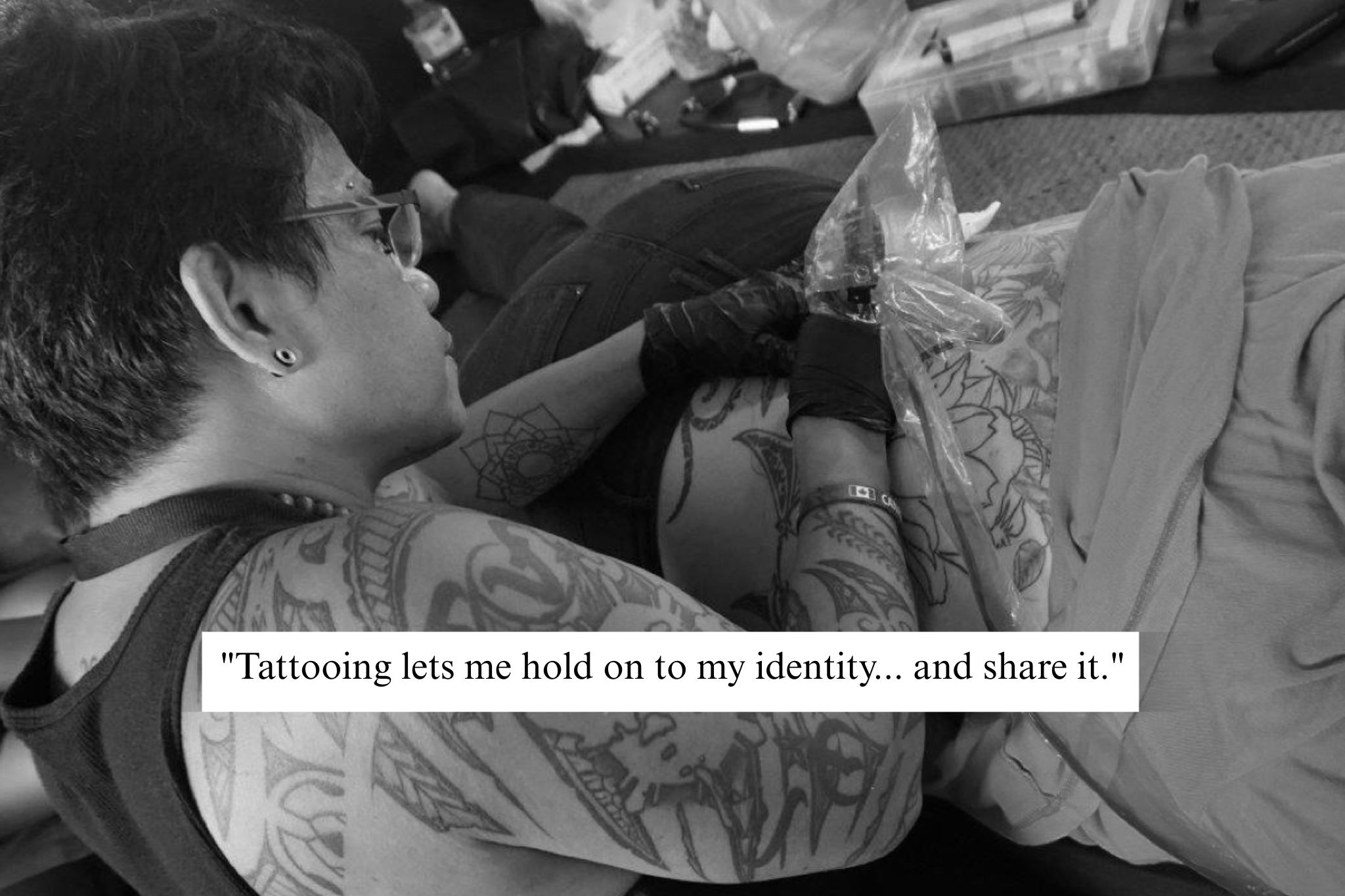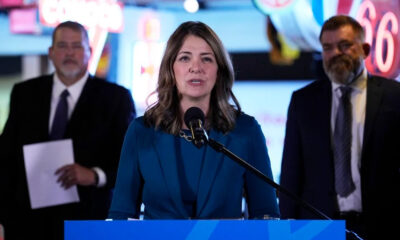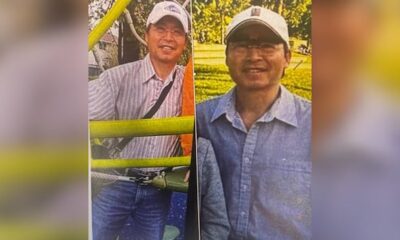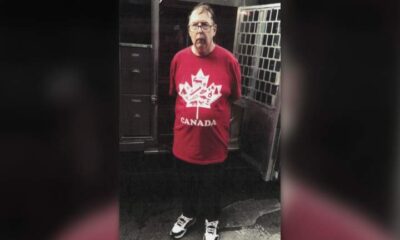Lifestyle
Vancouver Artists Transform Tattoos into Cultural Reclamation

In Vancouver, a new wave of tattoo artists is using their craft to reclaim cultural identities and resist the erasure of heritage. By incorporating traditional motifs and personal narratives into their work, these artists are fostering a deeper connection to their ancestral stories. Interviews with five distinct tattoo artists reveal how they are infusing meaning into their ink, turning tattoos into a powerful medium of cultural expression.
Chanton Hopkins: Reviving Indigenous Art
Chanton Hopkins, an artist from the N’Quatqua First Nation, draws on his Indigenous heritage with bold, West Coast formline tattoos. Located at Aboriginal Ink near Coquitlam, his journey began at the age of seven when he was inspired by his father’s collection of tattoos. By twelve, he had given himself his first tattoo. Hopkins recalls, “They wanted $10,000 to $15,000 to train me, so I just started tattooing people for free.”
His deep understanding of traditional design attracts many Indigenous clients who seek tattoos that carry significant cultural meanings. “I’m Indigenous, and we’re tattooing on unceded First Nations territory,” he explains. His art incorporates personal stories, often blending clan animals and spirit names into unique designs. A 2024 study by Concordia University researcher Melanie Lefebvre supports the healing potential of traditional Indigenous tattoos, showcasing how they help individuals reconnect with their roots.
For Hopkins, tattooing has been transformative. “Tattooing helps me break that cycle,” he says, as he now apprentices his son, continuing the legacy of their art.
Jo Yun: Cultural Exchange Through Ink
Emerging from South Korea’s tattoo stigma, Jo Yun found his path to artistry through manga. His work now thrives in East Vancouver, where he blends Japanese folklore with influences from Ukiyo-e and vintage manga. “In Korea, tattoos still carry a lot of stigma,” he notes. However, exposure to international conventions allowed him to connect with clients in a more relaxed atmosphere.
Yun views tattooing as a cultural exchange, stating, “I’ve met artists who reinterpret Japanese tattooing in their own ways. Seeing that kind of respectful exchange through art is powerful.” His designs, rich in symbolism and fluid movement, invite clients into a shared journey of artistic expression.
Ayasha Dunphy: Bridging Cultures with Mehndi
For Ayasha Dunphy, tattooing began with the temporary art of mehndi. Growing up in the United States, she found a creative outlet in henna designs, eventually transitioning to permanent tattoos after moving to Vancouver. “It’s hard to find someone willing to teach you,” she recalls, but a connection with Indigenous artist Jamie Blankenship changed her trajectory.
Dunphy now works at Sleep Talk Tattoo, where she specializes in South Asian designs inspired by her Ismaili heritage. Her clients often seek tattoos that reflect their cultural backgrounds, leading to meaningful conversations about identity. “Mehndi is celebrated when it’s temporary. But when it’s permanent, it becomes taboo,” she observes, highlighting the contradictions many South Asian individuals face in their tattoo journeys.
Justine Crawford: Honoring Heritage Through Art
Tattoo artist Justine Crawford combines her Chinese heritage with a modern tattooing style. Influenced by her grandfather, a carpenter and visual artist, Crawford integrates elements of family heirlooms into her designs. “Many of my clients are Chinese or East Asian,” she explains. They often request tattoos inspired by personal stories or objects from their homes.
Crawford encourages her clients to explore the history behind their chosen symbols, fostering a sense of curiosity and connection. “I’m still learning, too,” she admits, emphasizing the collaborative nature of her work.
Mario Landicho: Reclaiming Filipino Identity
Known as Mario “Mayo” Landicho in Vancouver’s tattoo community, he aims to revive traditional Filipino tattoo practices. Growing up in the Philippines, tattoos were associated with gangs, but his passion for tattooing emerged when he immigrated to Canada in 1999. He opened one of the city’s first Filipino-owned tattoo shops, Birthmark Tattoos, to challenge misconceptions about his craft.
Mayo emphasizes the importance of learning traditional techniques correctly. He studied under the world’s oldest living batok artist, Apo Whang-Od, who practices a pre-colonial hand-tapping method. “I wanted to do it properly,” he says, blending traditional Filipino motifs with modern tattooing approaches.
His work not only preserves cultural heritage but also serves as a means for immigrants to reconnect with their roots. “Tattooing lets me hold on to my identity… and share it,” he affirms.
The stories of these five artists illustrate a growing movement in Vancouver where tattoos serve as a medium for cultural reclamation and identity formation. Through their unique styles and personal narratives, they are reshaping perceptions of tattoos and creating spaces for diverse cultural expressions within the art form.
-

 Politics4 weeks ago
Politics4 weeks agoSecwepemc First Nation Seeks Aboriginal Title Over Kamloops Area
-

 World5 months ago
World5 months agoScientists Unearth Ancient Antarctic Ice to Unlock Climate Secrets
-

 Entertainment5 months ago
Entertainment5 months agoTrump and McCormick to Announce $70 Billion Energy Investments
-

 Science5 months ago
Science5 months agoFour Astronauts Return to Earth After International Space Station Mission
-

 Lifestyle5 months ago
Lifestyle5 months agoTransLink Launches Food Truck Program to Boost Revenue in Vancouver
-

 Technology3 months ago
Technology3 months agoApple Notes Enhances Functionality with Markdown Support in macOS 26
-

 Lifestyle3 months ago
Lifestyle3 months agoManitoba’s Burger Champion Shines Again Amid Dining Innovations
-

 Top Stories2 months ago
Top Stories2 months agoUrgent Update: Fatal Crash on Highway 99 Claims Life of Pitt Meadows Man
-

 Politics4 months ago
Politics4 months agoUkrainian Tennis Star Elina Svitolina Faces Death Threats Online
-

 Sports5 months ago
Sports5 months agoSearch Underway for Missing Hunter Amid Hokkaido Bear Emergency
-

 Politics5 months ago
Politics5 months agoCarney Engages First Nations Leaders at Development Law Summit
-

 Technology5 months ago
Technology5 months agoFrosthaven Launches Early Access on July 31, 2025





















